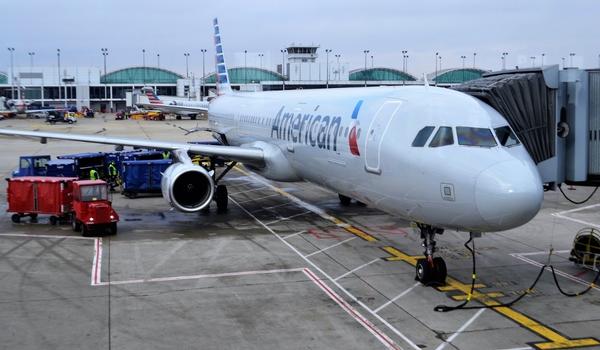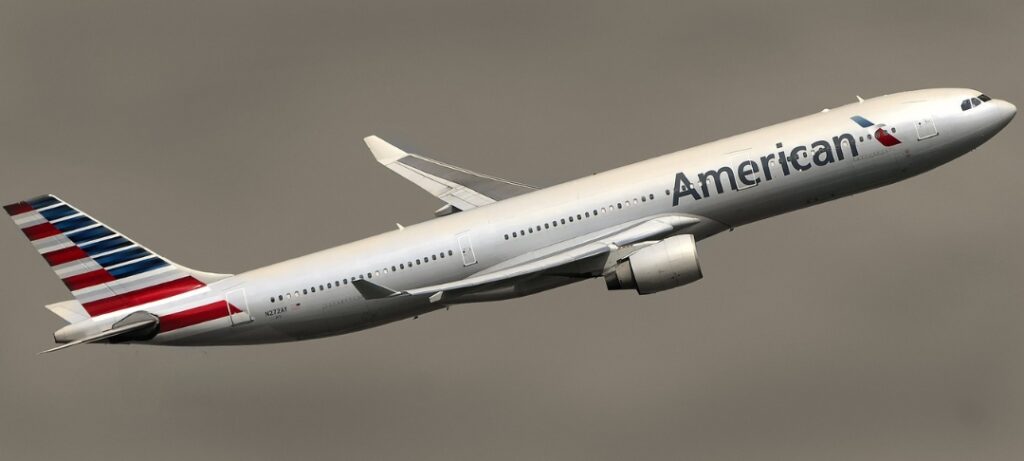American Airlines is one of the largest and most well-known airlines in the world, with a history that stretches back over 90 years. Founded in 1926, American Airlines has grown to become one of the largest airlines in the world, serving over 350 destinations in more than 50 countries.
The purpose of this blog post is to examine the history of accidents involving American Airlines. Despite the airline’s many accomplishments, it has also been involved in several high-profile accidents over the years. This post will take a detailed look at these accidents, their causes, and the impact they have had on the airline, the industry, and the passengers involved.
Historical Overview of American Airlines Accidents
American Airlines has been involved in several major accidents throughout its history. Some of the most notable include the following:
In 1949, an American Airlines DC-6 aircraft crashed in New York, killing 65 people. The cause of the accident was determined to be a navigation error.
· In 1962, an American Airlines DC-7 aircraft collided with a United Airlines DC-8 in New York, killing all 130 people on board both aircraft. The cause of the accident was determined to be a failure to properly monitor and control air traffic.
· In 1979, an American Airlines DC-10 aircraft experienced a catastrophic engine failure, causing the crash of the aircraft in Chicago, killing all 271 people on board. The cause of the accident was determined to be a design flaw in the engine.
· In 1985, an American Airlines Boeing 727 aircraft crashed in Texas, killing 137 people. The cause of the accident was determined to be a failure of the aircraft’s thrust reversers.
· These accidents and others like them are tragic reminders of the risks inherent in air travel. However, it is important to note that the aviation industry as a whole has made significant progress in terms of safety in the years since these accidents occurred.
The Impact of American Airlines Accidents on the Airline Industry
American Airlines accidents have had a significant impact on the airline industry as a whole. The accidents have affected American Airlines’ reputation and financial performance.
For example, the 1979 DC-10 crash in Chicago caused a significant blow to American Airlines’ reputation, as the accident was widely covered in the media and was determined to be the result of a design flaw in the aircraft. This led to a significant drop in the number of passengers choosing to fly with American Airlines.
In addition, the accidents have also had a financial impact on the airline. The lawsuits and settlements that result from accidents can be costly, and in some cases, the accidents have led to the retirement of certain aircraft types, resulting in additional costs for the airline.
However, American Airlines and the industry as a whole have made changes to improve safety. For example, after the 1985 crash in Texas, American Airlines and other airlines made changes to their training and maintenance procedures to prevent similar accidents from occurring in the future. The industry has also implemented safety technologies such as collision avoidance systems to improve the safety of air travel.
Analysis of American Airlines’ Safety Record
To evaluate American Airlines’ safety record, it’s important to compare it to that of other major airlines. A number of metrics can be used to evaluate an airline’s safety record, including the number of accidents, the number of fatalities, and the number of accidents per million flights.
American Airlines’ safety record is generally comparable to that of other major airlines. However, it’s worth noting that American Airlines operates a significantly larger fleet and flies a much higher number of flights than many other airlines, which can make it more likely to be involved in accidents.
Another important metric for evaluating an airline’s safety record is the number of fatalities per million flights. By this measure, American Airlines’ safety record is generally considered to be good, with a relatively low number of fatalities per million flights.
It’s also worth noting that American Airlines has invested heavily in safety technology and training. The airline has implemented a number of safety initiatives, such as its Flight Operations Quality Assurance program, which uses data analysis to identify and address safety issues before they lead to accidents.
Overall, American Airlines’ safety record is generally considered to be good, but it is important to note that no airline is immune to accidents and incidents.
Impact of American Airlines Accidents on Passengers
The impact of American Airlines accidents on passengers can be devastating. Passengers and families of those involved in accidents can experience emotional trauma, as well as financial hardship.
American Airlines has a responsibility to provide support and compensation to passengers and families affected by accidents. This can include providing counseling services, financial compensation, and assistance with travel arrangements.
The Air Carrier Access Act also requires airlines to provide certain accommodations for passengers with disabilities. For example, American Airlines must provide wheelchair assistance and make reasonable modifications to policies, practices, and procedures to accommodate passengers with disabilities.
It’s worth noting that flying is one of the safest forms of transportation and accidents involving commercial airlines are rare.
Investigating American Airlines Accidents
When an accident involving an American Airlines aircraft occurs, the National Transportation Safety Board (NTSB) is responsible for investigating the accident and determining its cause.
The NTSB is an independent federal agency that investigates transportation accidents and incidents in the United States. The agency is responsible for determining the probable cause of accidents and making recommendations to prevent similar accidents from occurring in the future.
The NTSB’s investigation process can be lengthy and complex. It typically involves collecting and analyzing a wide range of data, including flight data recorder information, radar data, and witness statements. The NTSB also conducts on-site inspections, interviews with crew members and other personnel, and laboratory testing of aircraft components.
Once the investigation is complete, the NTSB issues a report detailing its findings and recommendations. These reports can be valuable resources for the airline industry and other stakeholders as they work to improve safety and prevent similar accidents from occurring in the future.
The Evolution of Airline Safety

Airline safety has come a long way since the first commercial flights in the early 20th century. Over the years, advances in technology, changes in regulations, and improvements in training and procedures have all contributed to the steady improvement of airline safety.
One of the key factors in the evolution of airline safety has been the development of new technologies. For example, the invention of radar and the widespread use of navigation systems have greatly improved pilots’ ability to safely navigate in poor visibility conditions.
Another important factor in the evolution of airline safety has been changes in regulations. For example, the Federal Aviation Administration (FAA) has implemented strict regulations to ensure that airlines are meeting high safety standards.
Additionally, the industry has developed and implemented new safety management systems, which use data analysis and other techniques to identify and address potential safety issues before they lead to accidents.
American Airlines Accidents in the 21st century
American Airlines has had several significant accidents in the 21st century. Some examples include:
· In 2001, an American Airlines A300 aircraft crashed in New York shortly after takeoff, killing 265 people. The cause of the accident was determined to be a failure of the aircraft’s rudder control system.
· In 2013, an American Airlines Boeing 777 aircraft experienced a fire in the cabin while on the ground at London’s Heathrow Airport. The cause of the fire was determined to be a fault in the aircraft’s entertainment system.
· In 2018, an American Airlines flight experienced an engine failure shortly after takeoff, causing the aircraft to make an emergency landing. The cause of the accident was determined to be a failure of the aircraft’s engine fan blades.
These accidents and others like them have resulted in injuries and fatalities, and have also caused significant disruption to American Airlines’ operations. However, it’s worth noting that accidents involving commercial airlines are still relatively rare and that American Airlines has worked to improve safety and prevent similar accidents from occurring in the future.
How American Airlines is working to prevent future accidents
American Airlines has implemented a number of safety protocols and initiatives to prevent future accidents. These include:
· A Flight Operations Quality Assurance (FOQA) program, which uses data analysis to identify and address potential safety issues before they lead to accidents
· A Safety Management System (SMS), is a framework for managing safety throughout the airline.
· An SMS program, which uses data analysis and other techniques to identify and address potential safety issues before they lead to accidents
· The airline also invests in the maintenance and inspection of its aircraft, and the training and development of its personnel to ensure they are equipped to handle any situation that may arise.
These measures have helped to improve American Airlines’ safety record and prevent accidents from occurring.
American Airlines and the Future of Airline Safety
American Airlines plays a significant role in shaping the future of airline safety. The airline is committed to investing in new technologies and safety initiatives to improve the safety of air travel.
One of the key trends in the future of airline safety is the use of data and analytics. American Airlines is already using data analysis to identify and address potential safety issues, and this trend is likely to continue in the future.
Another trend is the use of automation and artificial intelligence to improve safety. American Airlines is already using automation to improve the efficiency and safety of its operations, and this trend is likely to continue in the future.
Additionally, the industry is looking into the use of new materials and manufacturing techniques for aircraft construction, which will make them more durable and safer.
American Airlines is well-positioned to take advantage of these trends and will continue to play a significant role in shaping the future of airline safety.
Conclusion
American Airlines has had a rich history as one of the largest and most well-known airlines in the world, however, like any other airline, it has also been involved in several high-profile accidents over the years. This post examined these accidents, their causes, and the impact they have had on the airline, the industry, and the passengers involved.
Despite these accidents, it’s important to note that the aviation industry as a whole has made significant progress in terms of safety in the years since these accidents occurred. American Airlines has also implemented a number of safety protocols and initiatives to improve its safety record and prevent future accidents. The airline is also well-positioned to take advantage of the trends shaping the future of airline safety, such as the use of data and analytics, automation, and artificial intelligence.
